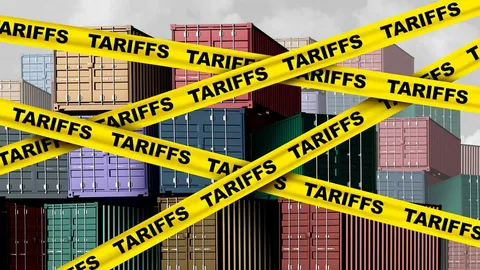Since the past few years, America has been in a peculiar predicament involving not food or shelter but clothing. The tariff policies utilized by President Trump effectively redefine the entire apparel industry by working against retail prices and demanding a deep analysis of the present trade war and its disastrous consumer impact.
Whereas initially, these tariffs were being used as a strategic weapon for the revival of U.S. manufacturing, in effect, ordinary Americans now battle over made-shift wardrobes and horrendous price increases. As the attacks on the apparel industry continue from the tariff policies perspective, the heavily aggravated consequences on retail prices, supply chains, and consumer behavior are staggering enough to pose a threat to not just businesses but also the very fabric of American daily life.
The Brewing Storm: Tariff Policies vs Apparel Industry
Tariff policies changes have long held sway over the U.S. apparel industry. Historically, while apparel accounted for only 6% of imports in total, it contributed to nearly half the entire collected tariffs. Under the current Trump tariff policies regime, the import of clothing from China — from where most of the cheap clothes come from — is now getting impacted by a tariff increase of incredible proportions — 145%.
The ongoing trade war has significantly bruised the apparel industry; sourcing, pricing, and inventory flows have all been disrupted here. The consumer impact on families is immediate and cruel — less choice and higher retail prices. With retailers once thriving on cheap imports, they are now left between a rock and a hard place: to absorb that loss or to push extra costs onto consumers, hence increasing the consumer impact even further.
Retail Prices Skyrocket: The Direct Consumer Impact
One of the most visible consequences of the trade war coupled with Trump’s aggressive tariff policy has been rising retail prices. To cite Trade Partnership LLC, a pair of jeans once costing $80 now costs anywhere between $90-$96, whereas sneakers originally priced at $90 now cost $106 or more. As the rise in retail prices increases, consumer impact can only deepen, particularly for lower-income families. Fast fashion loses appeal among young adults, while lines in front of charitable resale platforms such as Goodwill and thrift stores are pretty much expanding.
During the trade war, the resale market emerged as an unwitting white knight, backed up by major growth for players such as ThredUp and The RealReal. The consistency of the current tariff policies implies that every bit of the apparel industry, from sourcing to shelf, finds itself jawed at. Thus, raising the cost of even basic apparel to unimaginable heights and thereby exponentially multiplying the consumer impact.
For More Trending Business News, Follow Us 10xtimes News
Trade War Fallout: Supply Chain Collapse and Apparel Shortage
Besides facing high retail prices, the trade war would first decimate the loss of fragile supply chains that build the apparel industry structure of clothing. Retailers cancel orders, alter production, and are left with empty shelves because of unpredictable tariff policies changes. Only 3% of American clothing is manufactured in America; the rest is imported and is now hurt by tariffs. Even if the tariffs were reversed today, the apparel industry would take years to recover from this aspect of the trade war.
Consequently, Americans can very soon expect to see shortages in what they wear — the chilling consequence of the fact that the trade war does not just deal with numbers; the numbers, too, translate into the ordering of daily life. Across Main Street and Wall Street, retailers feel the grounds shaking from the dusk of fear indexes shooting high, while recession fears grow.
A Shifting Future: Resale Boom and Economic Uncertainty
This experience of a tariff policies has only been devastating for traditional retail but would, paradoxically, spur on the growth of a secondhand market. It is reported by Mastercard that 27% of luxury online spending is now resale-related, directly connecting that number to the trade war and its consumer impact spending ability.
ThredUp and The RealReal report record citation figures due to high retail prices and a chaotic apparel industry, but such booms cannot heal deeper economic wounds. With the trade war clearly not easing, tariff policy continues to threaten jobs while hollowing out businesses and leaving families souring at the edge. Full consumer impact might take years to be felt from the choices made today; however, there is one fact: America’s closets — and wallets — are emptier because of it.






